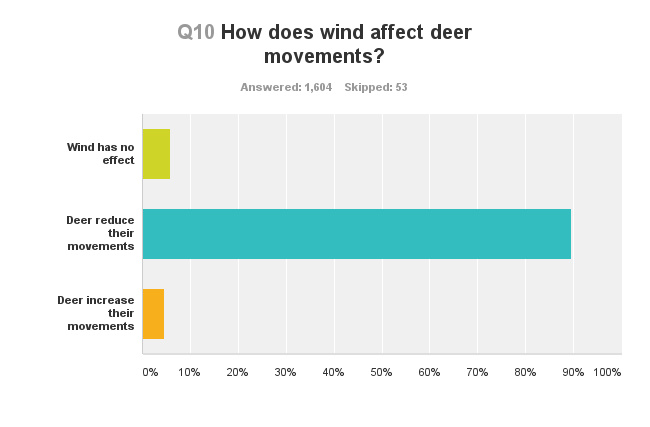With more than 1,600 readers responding to the survey, many had the same idea of how wind would change deer movement! Nearly everyone was sure that a windy day would affect deer movement in some way. And almost 90% of readers thought deer would move less if the day was windy.
But at what level of wind did readers think deer would be affected? We gave you the following choices to choose from:
1. Light breeze (wind felt on face, leaves rustle, vanes begin to move)
2. Gentle breeze (leaves and small twigs constantly moving, light flags extended)
3. Moderate breeze (dust, leaves, and loose paper lifted, small tree branches move)
4. Fresh breeze (small trees begin to sway)
5. Strong breeze (larger tree branches moving, whistling in wires)
6. Near gale (whole trees moving, resistance felt walking against wind)
More than half of you thought deer movement wouldn’t be affected until winds are strong. About 20% thought a moderate breeze would be enough to affect the deer. The remaining responses were pretty equal for gentle breeze, fresh breezes, and near-gale winds.
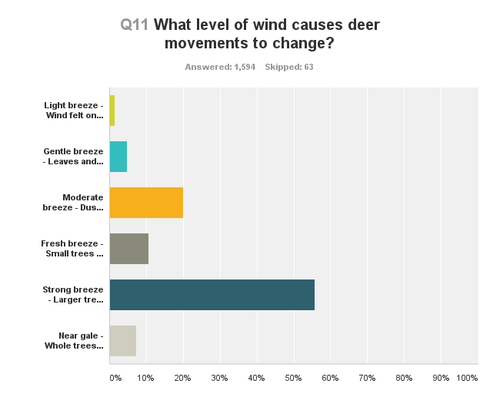
But how did wind really affect the deer?
To interpret the data, we calculated the miles each deer traveled during the day and night throughout the month of October (more than 1,700 deer-days/nights).
We looked at the weather data provided by NOAA and categorized wind levels loosely according to the Beaufort Winds Scale – a scale created in the 1800s by the Royal Navy to record wind speeds.
October 2013 wasn’t a particularly windy month – top wind speeds were only 12 mph – so we couldn’t use the entire scale. Here is how we categorized the wind speeds.
Calm: Winds less than 1 mph
Light Air: Winds between 1 and 3 mph
Light Breeze: Winds between 4 and 6 mph
Gentle Breeze: Winds between 6 and 10 mph
Moderate Breeze: Winds above 10 mph
We then analyzed deer movement at each of these levels during the day and at night, and split the data into males and females.
And what did the data tell us? Well, it was pretty surprising! It seems that for both males and females, deer move MORE during a windy day, but they’ll move LESS during a windy night!
The graphs below estimate the mean miles traveled per day/night by the deer. As you can see, both males and females move more during the day when it is windy (a tenth of a mile or more), but will move less during a windy night (about a tenth of a mile less)!
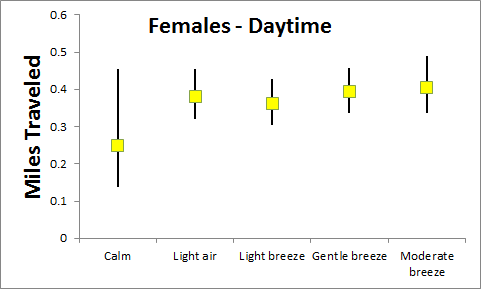
The squares are the average distance traveled and the vertical lines represent the variability about the mean (95% confidence intervals).
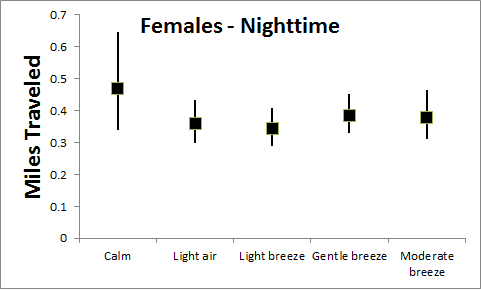
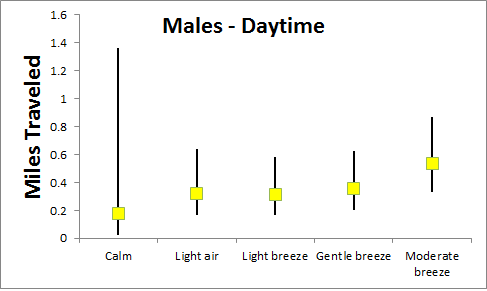
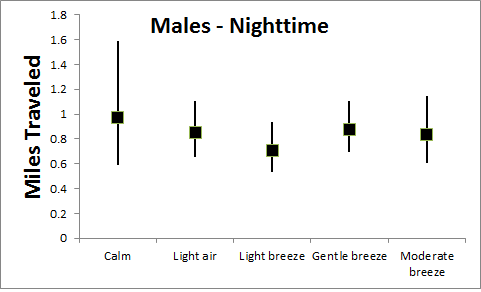
Even more interesting, it seems these movements are affected as soon as there is even light air movement occurring. Most readers thought deer movement wouldn’t be altered until a “strong breeze,” or winds of speeds around 25 mph, but our data shows deer moving more during the day (or less during the night) with the presence of even just light air movement!
So there you have it! Wind definitely affects deer movement, but maybe not in the way you thought!
-Leah Giralico
Leah is an undergraduate in the College of Agricultural Sciences working towards her B.S. degree in Veterinary and Biomedical Sciences
You can subscribe via email for updates to the Deer-Forest Blog or Follow us on Twitter @WTDresearch
And check out the Photo Gallery for pics of radio-collared deer – or send us your game camera photos of collared deer to share.
